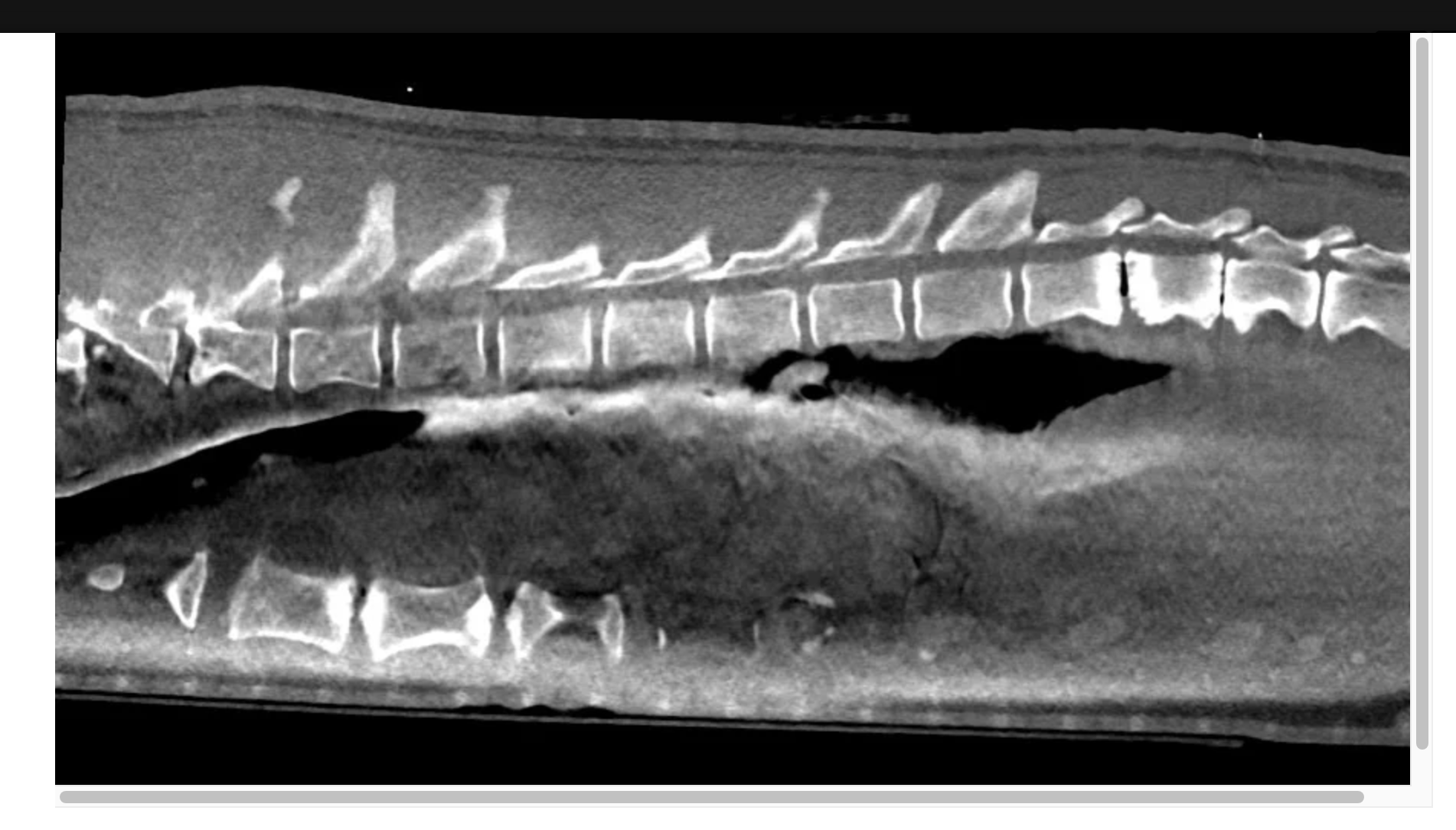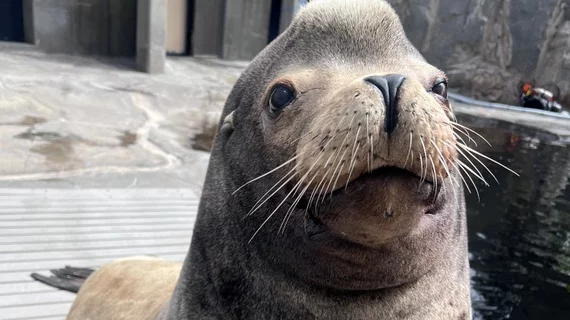'Logistically pretty amazing'—Radiology staff gets creative to scan 650-pound sea lion
Thanks to some advanced (and creative) imaging, an ailing sea lion resident at the Hogle Zoo in Salt Lake City, Utah is now on the mend.
Diego is a 650-pound California sea lion. In September, he started to show concerning signs that caught the attention of his care staff. The usually lively and playful sea lion became less active, started eating less and vocalizing more—all signs that he was experiencing some sort of discomfort.
After routine bloodwork and an ultrasound of Diego’s abdomen yielded normal results, veterinary staff decided they needed to take a more in-depth look at the sea lion. They collaborated with University of Utah Health to get Diego into the organization’s radiology department for imaging, which was no small feat.
Diego was placed under anesthesia while he was transferred for a CT scan. During this time, his care team had to manually support his vital functions, such as breathing.
“Hogle Zoo’s medical and husbandry team often perform innovative diagnostics and therapies to give the animals the very best care possible, but taking a 650-pound sea lion for a CT scan was a first,” Director of Animal Health for Hogle Zoo, Erika Crook, DVM, Board Certified Specialist in Zoological Medicine, said in a release. “Riding in the back of the zoo van with him, the large animal anesthesia machine and a huge tank of oxygen and manually giving him breaths the whole way was quite an experience.”
Transportation woes aside, completing the scan itself proved to be quite cumbersome as well. At 650 pounds, Diego is significantly larger than any patient the department had seen for a CT scan. However, with a little creativity, the team was able to scan Diego’s entire body.
“It was logistically pretty amazing,” Edward Quigley, MD, PhD, a professor of radiology at U of U Health, who took the lead for Diego’s exam, said. “Diego was longer than the standard CT scanner table, so we had to be creative to support his hindquarters while imaging.” 
The scan revealed Diego was suffering from degenerative disc disease, which explained the weakness he was experiencing in his front and rear flippers. Though uncomfortable, the condition is treatable with steroids and anti-inflammatory medications.
The team initiated treatment following Diego’s scan and he is said to be on the mend now. Both his appetite and strength have started to return, and his care takers are optimistic about his recovery.

